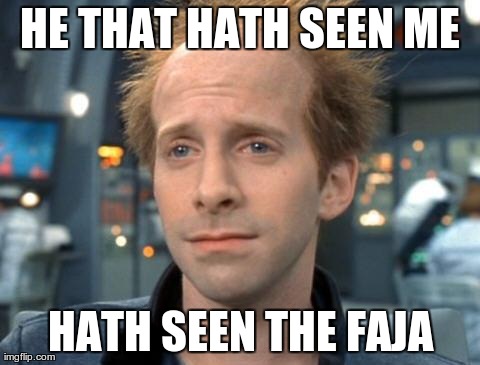Category Archives: Critters
Babes and Ball Crushers.

Nice! A Beautiful woman taking full advantage of her Femininity.
The following is an exert From a ‘New Statesman’ article…
‘Of course all men don’t hate women. But all men must know they benefit from sexism.’
“This is going to hurt. In the past few months, it has been almost impossible to open a newspaper or turn on a television without encountering a story about another under-age girl being raped, another female politician harassed, another trans woman murdered. But as women, girls and a growing number of male allies start speaking out against sexism and injustice, a curious thing is happening: some people are complaining that speaking about prejudice is itself a form of prejudice.
These days, before we talk about misogyny, women are increasingly being asked to modify our language so we don’t hurt men’s feelings. Don’t say, “Men oppress women” – that’s sexism, as bad as any sexism women ever have to handle, possibly worse. Instead, say, “Some men oppress women.” Whatever you do, don’t generalise. That’s something men do. Not all men – just some men.
This type of semantic squabbling is a very effective way of getting women to shut up. After all, most of us grew up learning that being a good girl was all about putting other people’s feelings ahead of our own. We aren’t supposed to say what we think if there’s a chance it might upset somebody else or, worse, make them angry. So we stifle our speech with apologies, caveats and soothing sounds. We reassure our friends and loved ones that “you’re not one of those men who hate women”.
What we don’t say is: of course not all men hate women. But culture hates women, so men who grow up in a sexist culture have a tendency to do and say sexist things, often without meaning to. We aren’t judging you for who you are but that doesn’t mean we’re not asking you to change your behaviour. What you feel about women in your heart is of less immediate importance than how you treat them on a daily basis.
You can be the gentlest, sweetest man in the world yet still benefit from sexism. That’s how oppression works. Thousands of otherwise decent people are persuaded to go along with an unfair system because it’s less hassle that way. The appropriate response when somebody demands a change in that unfair system is to listen, rather than turning away or yelling, as a child might, that it’s not your fault. And it isn’t your fault. I’m sure you’re lovely. That doesn’t mean you don’t have a responsibility to do something about it.
Read more >>>here<<< if you must.
^^^^Whiny Pseudo-Feminist Bullshit Saith I!
Esp in New Zealand and the West.
We are not talking about the severe oppression of woman in Islamic nations.
The feminists in those countries are *Real Activists for equality* fighting *Real Sexism*.
We are talking about the Delusion of oppression in countries like New Zealand, Australia, Brittan, etc.
Countries in which We actually have the reverse!
Woman get special treatment.
We have Laws which give Woman advantages and oppress men.
Most of what the feminists in western nations bleat about is not about oppression but about Freedom!
They are typically Butt ugly Lefty Hot-woman haters and Ball crushers...
Notice how the article attempts to lay collective blame upon *all men* as complicit in this 'Sexual tyranny'.
Notice how it attempts to nullify the truth... that it is only *a minority* of men who rape, etc.

Pseudo-Feminists seek to De-sex themselves and Men… yet they still want men to treat them like ladies and to be Manly…. It’s utter confusion!
Its a travesty!

Equality means Woman should be prepared to be hit on at work and have their breast comment on and to allow men to have titty calendars up in their workshops… and to hear sexist jokes because that’s freedom and equality.
I’m not suggesting Men ought to behave like that but that such behaviour does not represent ‘oppression.
Most of the time it’s just light humour of the same sort as Men poke at each other.
At worst it’s just bad manors and crass.
Men dont care if woman have Calenders of ‘half naked men in their office… or tell feminist jokes or get hit on by female co-workers….
Of course it is the right of employers to govern such things as Calenders, etc in the work place and to foster a culture where everyone feels comfortable .
What I am griping about is the new culture of Complaint when a feminist goes into a Man’s domain and then complains to Management about a Girlie calendar on a Guys work station.

Feminists make up a large percentage of the Vocal support restore and to maintain the prohibition of prostitution, and to ban Pornography… which are Laws which remove woman’s rights over their own bodies.

*What feminists want is not equality and freedom* but Special advantages and to oppress men for being men.
It sux and it makes woman into ugly He-woman… a type of transvestite!

I am not saying *All large plain Janes are like this. Many are not.
Many are not bitter and twisted Men haters.
Yet There is a good reason why Feminists are stereotyped as Big fat ugly women with bad attitudes.
Why these particular types Hate prostitutes and strippers.
Hate beautiful woman being ogled at.
It’s because they are driven by *Envy* and lack of self esteem.
They blame Men and Hot chicks for their own obesity!
Truly most Western feminists are uglier on the inside than on the out!
I’m not even suggesting woman ought to be prostitutes, strippers, or Porn stars.
I am saying that such things are within their legitimate rights and liberties.
I’m a Christian and as such I believe sex workers *devalue them selves*… yet because the world is the way it is… I can appreciate and respect why they do it.
I have far more respect and admiration for sex workers than for Dole bludgers.
To my way of thinking a dollar earned by sex work is an honest Dollar, as it allows them to take care of themselves and to provide for their kids, etc.
You see plenty of woman take full advantage of their beauty and femininity… as Models, Promo Girls, and in the entertainment industry.
Many get rich and famous because of it.
The reality in the West is that most of the so-called Feminism in the movement is not about getting equal rights for woman. Its a Bogus ‘charade Feminism’… a Front… for large numbers of Fat, ugly, Nasty woman to hate on Men and their more beautiful contemporaries who have taken the trouble to Keep them selves in shape and looking their best… and wield formidable Sexual power.
(Take care Babes… The love of Money… and power Corrupts!)

Kiwi Model Amy Lee Palmer

There are no Laws in NZ which says Woman must accept lower pay than men.
There are no Laws in New Zealand against woman becoming Mechanics and Engineers, Truck drivers etc.
The fact is that for what ever reason woman choose not to engage in these types of occupation.
This disparity is Freedom at work.
The fact is that you ought not to require Political coercion to achieve a higher order of civilisation.
If some people think this is wrong then they ought to try and start a cultural revolution via preaching and sharing their values and vision, not to lobby for restrictions on Liberty.
If ultimately they are ignored because Society does not desire to change or embrace their opinion
that’s simply ‘Hard Cheese’ for them.
They have no legitimate rights to impose their opinions upon society via Anti-freedom legislations.

Like most men I Love woman!
In my dealings with them at work and in my private life I attempt to treat them with the utmost respect no matter whether I find them attractive or not.
I take care not to allow myself to be governed by my own sexual drives and opinions.
I respect competence, intelligence, ethics, and nouse.
IMO A woman’s attitude is what is the most important thing.
A sexy woman with a nasty, demanding, Cold or Narcissistic attitude is *Not sexy!*…. she’s a Monster as far as I’m concerned.
And a woman who may be considered plain or overweight is far more appealing when they are happy within themselves and not consumed with envy and jealousy… when they actually enjoy being treated as an equal… laughs and enjoys Boys being boys in her presence… takes no offence at Blonde jokes, and does not get nasty when Men take notice of beautiful woman.
That is an emancipated woman.
Tim Wikiriwhi.
Read more about this here >>>> The mother of Invention?
Feminism, Lisa Lewis, and the death of romance.
Meet a Real Feminist with a legitimate cause here >>>> “If I don’t speak, who will?” Malala Yousafzai, 14
I’m a Real Feminist myself! >>>> Standing up for Justice more important than Personal Ambitions
Zealandia
Come near, you nations, and listen;
pay attention, you peoples!
Let the earth hear, and all that is in it,
the world, and all that comes out of it!
The Lord is angry with all nations;
his wrath is on all their armies.
He will totally destroy them,
he will give them over to slaughter.
Their slain will be thrown out,
their dead bodies will stink;
the mountains will be soaked with their blood.
All the stars in the sky will be dissolved
and the heavens rolled up like a scroll;
all the starry host will fall
like withered leaves from the vine,
like shriveled figs from the fig tree.My sword has drunk its fill in the heavens;
see, it descends in judgment on Edom,
the people I have totally destroyed.
The sword of the Lord is bathed in blood,
it is covered with fat—
the blood of lambs and goats,
fat from the kidneys of rams.
For the Lord has a sacrifice in Bozrah
and a great slaughter in the land of Edom.
And the wild oxen will fall with them,
the bull calves and the great bulls.
Their land will be drenched with blood,
and the dust will be soaked with fat.For the Lord has a day of vengeance,
a year of retribution, to uphold Zion’s cause.
Edom’s streams will be turned into pitch,
her dust into burning sulfur;
her land will become blazing pitch!
It will not be quenched night or day;
its smoke will rise forever.
From generation to generation it will lie desolate;
no one will ever pass through it again.
The desert owl and screech owl will possess it;
the great owl and the raven will nest there.
God will stretch out over Edom
the measuring line of chaos
and the plumb line of desolation.
Her nobles will have nothing there to be called a kingdom,
all her princes will vanish away.
Thorns will overrun her citadels,
nettles and brambles her strongholds.
She will become a haunt for jackals,
a home for owls.
Desert creatures will meet with hyenas,
and wild goats will bleat to each other;
there the night creatures will also lie down
and find for themselves places of rest.
The owl will nest there and lay eggs,
she will hatch them, and care for her young
under the shadow of her wings;
there also the falcons will gather,
each with its mate.Look in the scroll of the Lord and read:
None of these will be missing,
not one will lack her mate.
For it is his mouth that has given the order,
and his Spirit will gather them together.
He allots their portions;
his hand distributes them by measure.
They will possess it forever
and dwell there from generation to generation. (NIV)
Where to buy drugs
Want to buy drugs but don’t know where to shop?
The National government has thoughtfully provided a list of authorised tinnie houses and their locations.
Thank you National government!
For further information call the National Poisons Centre on 0800 764 766. 🙂
He that hath seen me
For an entertaining exercise, name the third person of the Unholy Trinity.
Who is it? Mini-Me? Fat Bastard? Frau Farbissina? Or … ?
Brian Leftow on “One Person Christology” is Glenn Peoples’ latest blog post.
How can a Chalcedonian Christology avoid ending up with Christ being two people? If the divine logos (the second person of the Trinity) combined with a fully functioning human body and soul (which some people take to be the ingredients of a human being), that is surely two people and not one, right?
Commenter Nathan thinks it would be an entertaining exercise “to try and define Logos and Human as classes, and then try and bring them together to get incarnate Jesus.” He adds, “but ultimately it won’t work.”
Class, superclass, subclass, interface, implementation, instantiation, inheritance—these are all concepts in object-oriented programming (OOP). Object-oriented programming is a programming paradigm that represents things in the real world as objects with attributes (“properties”) and abilities (“methods”). In software development, object-oriented programming is the one true way. But in theology?
The theology question of the day is not
How can God be three persons?
but the closely related
How can the Incarnate Christ be only one?
By implementing the Human interface, that’s how! Not sure if serious or trolling? I’m serious. I think everything is software.
(Incoming! Genetic fallacy! “When you’re a hammer, everything looks like a nail,” you say. “You’re a progr(h)ammer, Richard, so *of course* everything looks like software to you!” Nice try but no chocolate fish. Thales was not a tap.)
I’ll try to elaborate. But there’s a problem. Whereas the procedural paradigm is intuitive, the object-oriented paradigm is counter-intuitive. I started out in the procedural paradigm. Next stop, bitter experience. That’s when I made the paradigm shift. But it wasn’t easy explaining the object-oriented paradigm to myself then, and it won’t be easy explaining it to you now. That’s the problem. But I’ll try to elaborate.
I don’t always determine the meaning of a word by looking at its etymology, but when I do I look at the etymology of the word ‘logic’. The word ‘logic’ derives from the Greek λόγος or Logos, which has no exact translation but means, roughly, “reason, idea, word”. But Logos is the second person of the Trinity. Christ is Logos.
God is the author of the logic of the world, and his son is the expression of this logic.
So says philospher Nicholas F. Gier. Now, what is software but an expression of logic? Think about it.
In the beginning was the Code, and the Code was with God, and the Code was God.
Controversial? Heretical? Or just plain bat-shit crazy? No more so than the Logos Christology of the Gospel of John is any of those things.
A brain (and the body housing it) and a mind (the software running on it) are what constitutes a human person. Christ Incarnate was a human person. He was simultaneously the second person of the Trinity. How come he was not two persons, but just one? Simple. He was running different software. You and I instantiate the class DomesticatedPrimate. Christ Incarnate instantiated the class Logos. Christ is the class Logos. He instantiated himself.
An interface is an abstract class that defines a set of abstract methods. The Human interface is an abstract class that defines what it is to be human in terms of distinctively human attributes and distinctively human abilities. The classes DomesticatedPrimate and Logos have this in common. They both implement the Human interface.
That’s my destructive heresy for today. I’m not teaching it, mind. Just putting it out there.
OOP or Oops!? Be sure to let me know in the comments.
Onya DotCom! He does Kiwi’s a great service by Suing our Corrupt Government for $6 million.

No doubt Dotcoms claim of $6m will cause plenty of whinging… Good!!!!
I think it’s Nobel of Dotcom to pledge any $$$ he receives to Charity (less expenses) from his Law suit against the criminal activities of the GCSB, The Police, and PM John Key… yet even if he pocketed it all…. I would still Salute him for the righteousness of his claims…even though as a taxpayer… I am footing the bill… not John Key.
I say this because We are responsible for the arseholes we elect. (When I say *We*… I mean *you* Chumps who voted National… and you chumps who did not vote National but still support the Anti-libertarian status quo!)
I say this because such gross abuses of power… against any Human being…. whether Citizen, Resident, or visitor… cannot justly be without recompense, and so by hitting JK… and his Goons… and his Tax slaves hard… Dotcom serves up a reality pill which… unless the sheep are too dopey to apprehend…. ought to send shock waves through the corridors of power!
The hurting Sheeple… The Tax slaves who must foot the bill…. ought to be pissed enough about it…. not at the victim… Dotcom…. but at the Corrupt Bastards in power who perpetrated this crime against Dotcom to square a secret deal John Key had made with Hollywood for the sake of getting the Hobbit filmed in New Zealand.
The Tax slaves ought to demand *Heads to Roll* for such an injustice and financial screw up… In the GCSB…. IN the Police…. and most importantly *in the Beehive*
John Key must be forced to resign.
It was his office which authorised this Politically motivated crime!
If New Zealanders fail to rise up …. they will feul the Arseholes into thinking they can do whatever they like…. without fear of consequences from the Sheeple.
*By Suing John Key and Co…. Dotcom is working to protect all our rights from such criminal activities in the future!*
Now I am not saying that Punishing John Key and National means voting for that other bunch of a complete Dooshbags… Labour…Greens… Maori…. etc!!!
It’s time for New Zealanders to vote for a new party of principle…. one that respects Equality, Liberty, and Justice.
Tim Wikiriwhi.
>>>>Dotcom set to claim $6m<<<< Read more... >>>>The GCSB BILL… Arabs (and Maori Radicals) with knives at the foot of the bed!
>>>> Filthy Bastards: “It was an Accident”. Kim Dotcom Raid. <<<<
Pointless, incessant barking
Hundreds march against animal testing
A star you can trust
Big props to Grant Hall of the Star Trust. A formal statement will be made by the Star Trust on this issue by the end of the week.
I think what Grant says, on behalf of the industry, is good enough. It’s honest. And it’s better than we had any right to expect. Not good enough? Let he who is without sin cast the first stone.
But problems remain.
The Star Trust should never have been put in a position where its spokesman had to make such a statement. That no animal testing shall be required should have been written explicitly into the Psychoactive Substances Act. It’s not too late to leave animals out altogether. Be on the march next Tuesday 30 July.
The Star Trust is funded by private contributions from individuals and industry members who support drug policy reform, but operates as an independent entity being audited and overseen by a Board of Trustees. This allows us to represent the industry and to monitor a voluntary code of conduct for responsible operators.
A voluntary code of conduct for responsible operators? I’m all in favour of industry self-regulation and the good work of the Star Trust. But what about the irresponsible operators? The people who not so long ago were happy selling K2 to children via local dairies? They didn’t follow a voluntary code of conduct then. They won’t follow one now.












